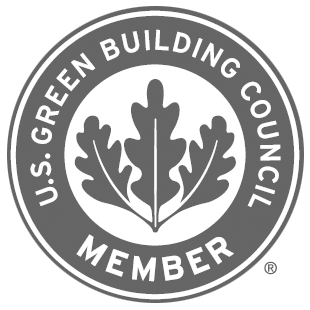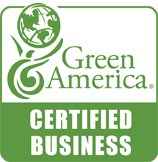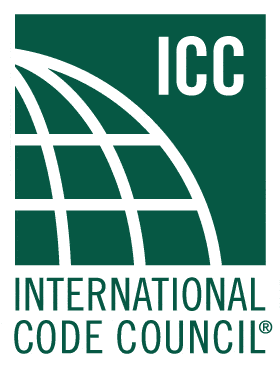Why Bamboo?
In a Nutshell — Bamboo Is Better
Not only is bamboo the best eco-friendly alternative to building with timber from a green perspective, it actually performs better in University tests that measure things like tensile and compressive strength. And in real world events like hurricanes and earthquakes, well-constructed bamboo homes (like the ones we create) stand strong while conventionally-built structures often don't.
WHY BUILDING WITH BAMBOO IS THE BETTER CHOICE:
BAMBOO
Strength
As strong as mild steel with the compression strength of concrete. Amazingly, one inch of bamboo can hold up to 7 1/2 tons of weight.
Termites
Tests show that termites refuse to eat even untreated bamboo.
Hurricanes
Bamboo Living Homes surpass the toughest hurricane codes in the USA, and in 1995, our homes withstood three back-to-back hurricanes with 173 mph winds.
Earthquakes
Bamboo bends instead of breaks. In April 1991, twenty bamboo houses built for the National Bamboo Foundation in Costa Rica suffered no structural damage from a 7.5 Richter scale earthquake, despite being directly over the epicenter.
Indoor Air Quality
Our homes exceed California Air Resources Board standards. And all of our materials are minimally treated with natural borates to better resist mold and mildew.
WOOD
Strength
In 1992, 95% of all homes were built with softwoods like Douglas fir. University studies show softwoods can't match bamboo's compression and tensile strength.
Termites
Termites continue to cause significant damage to wood homes, requiring continued treatment with chemicals.
Hurricanes
Recent tests show that conventionally built wood homes can't stand up to even 100 mph winds.
Earthquakes
The same earthquake leveled scores of conventionally built homes, hotels, and resorts. (Read the article in Washington's Observer Reporter)
Indoor Air Quality
New home construction increasingly uses "manufactured" woods like particle board bonded with adhesives and polymer materials which can lead to reduced indoor air quality from volatile organic compounds (VOCs).
BAMBOO VS. TREES
Bamboo plantations offer several additional benefits over trees:
Bamboo plantations reach maturity within 4-6 years and can be harvested 2-3 years later; trees are typically harvested after 20-50 years or more.
Bamboo plants do not die and decay after harvesting whereas trees do, leaving their roots and stumps to decompose, releasing their carbon.
Since bamboo isn’t clear-cut like trees, the soil is not exposed to weather. Its rhizome mat continues to live after each harvest, protecting the ground from erosion.
Initial planting costs are lower than for trees.
More frequent harvests provide faster and more regular income for farmers and large plantation investors.
Over 90% of the biomass is stored in culms and rhizomes.
Bamboo can be harvested by hand or small chainsaws, using less fossil fuel than by large machinery required to harvest and load trees.
CARBON SEQUESTRATION
Currently, over 30 billion tons of carbon dioxide equivalent are produced each year by human activity. Bamboo offers one of the quickest natural ways of removing vast amounts of that carbon dioxide from the atmosphere. Bamboo buildings are a carbon capture and storage system. Bamboo takes CO2 from the atmosphere and through the process of photosynthesis turns it into sugars. The bamboo plant transforms these sugars into the compounds that make up the bamboo fiber. Half the weight of the bamboo is carbon. The carbon from the atmosphere is thus locked up in the bamboo fiber itself. Once the bamboo is treated with natural borates and used to build buildings, you have sequestered and stored the carbon for a hundred years.
Growing forests absorb CO2. Bamboo, as well as trees, sequesters carbon dioxide from the atmosphere and converts the carbon into plant fiber. If the bamboo and wood are made into houses, then the carbon is effectively stored for the lifespan of the house. Thus, bamboo homes become a carbon capture and storage system. There is strong evidence that plantations of clumping bamboo produce significantly more biomass than trees. Therefore, bamboo is able to produce more houses and sequester more carbon than the same area planted in trees.
A carbon sink is a natural or artificial reservoir that accumulates and stores some carbon-containing chemical compound for an indefinite period. The process by which carbon sinks remove carbon dioxide (CO2) from the atmosphere is known as carbon sequestration. Large-scale bamboo plantations and sustainable management of the world’s existing bamboo resources can become effective carbon sinks.
GREEN BUILDING
Bamboo Living is proud to be setting the standard in green building. As premier green building practitioners, we strive for ecological harmony using creative design to build our green homes in ways that support the natural environment.
Green Building stimulates architectural design and green construction that promotes sustainable, healthy living. If all buildings in the U.S. met LEED green building standards, national energy use and global warming emissions would drop by at least ten percent. On average, 8,000 lbs of construction waste are thrown into the landfill during the construction of a 2,000 square foot home. Why not build green? Bamboo Living supports these market changes and aims to set the standard in green building.
Bamboo Living creates green homes that provide a healthier and more efficient way of living. We incorporate green design, LEED certification, and green construction to significantly lessen any negative impact on the environment and to improve the health of our clients. Green homes are built to be healthier, more eco-friendly, more durable, more sustainable, and more cost-effective.
LEED-CERTIFIED
LEADERSHIP IN ENERGY & ENVIRONMENTAL DESIGN
The LEED green building certification program stands for “Leadership in Energy and Environmental Design.” LEED green homes save energy and protect the environment by using green building materials and renewable resources, such as bamboo. As a proud leader and LEED-certified green home builder, Bamboo Living promotes reducing environmental disturbance and construction waste.
Our ability to change the face of the planet escalates at a faster rate than our ability to foresee the consequences of our changes. Meeting the needs of the present without compromising the ability of future generations to meet their own needs is the concept behind sustainability. As the human population has increased, natural ecosystems have declined, causing changes in the balance of Earth’s natural cycles. Sustainability helps to evaluate and minimize the consequences, regionally and worldwide, of human impacts now and in the future. A sustainable building, or green building, is the outcome of a sustainable design that focuses on increasing the efficiency of resource use — energy, water, and building materials — while reducing impacts on human health and the environment.
Sustainable design aims to provide ways of building that use a less non-renewable material, less energy, and cause less pollution and waste while still providing safe and sufficient dwellings. There is great potential for bamboo to provide long-term sustainable improvements in environmental, social, and economic well being. Adopting a sustainable lifestyle is our best solution for preserving life and creating sustainability for future generations.
ORGANIC HOMES
We take great effort to build an organic, breathing home—a home that is healthy, safe, and green for all members of your family. Bamboo Living green homes use toxin-free building materials to provide natural ventilation and to help combat indoor air pollution, which can often be worse than pollution outdoors.
The indoor air quality (IAQ) of a home has a major impact on the long-term health of its residents. Bamboo Living ensures that all of the products we use for treatments and finishes meet the highest IAQ standards. The interior finishes applied in our green homes are all low in VOCs (volatile organic compounds). Also, the fungicide additives that we use in our finishes are the safest on the market.
Bamboo Living takes pride in becoming a leader among eco-conscious companies. We build our green homes with the most renewable resource on the planet, consciously reduce construction waste, always recycle, and support the development of sustainable eco-living. When you buy a bamboo home from us, you are helping take part in the green revolution.
GROWING & HARVESTING BAMBOO
Bamboo forests are typically harvested in a very different manner than tree forests. Bamboo culms are usually harvested 2-4 years after the shoot reaches its full height, which can take just a few months. Sympodial (tropical clumping) species will send up new shoots every year if conditions are adequate—depending on rainfall, temperature, and nutrients. Bamboo can be sustainably harvested yearly. In the past, tree forests were typically harvested by clear-cutting, which is more economical and provides full sun for a newly reforested tree crop. However, clear-cutting adversely affects the local ecosystem, encourages soil erosion, and dramatically reduces the carbon sequestration rate of the forest. More sustainable tree forest harvesting techniques are gaining acceptance in the USA.
WHO BUYS A BAMBOO HOME?
Bamboo Living homes are designed to exist in partnership with the nature that surrounds them. The features of these homes, such as passive cooling and ventilation, natural light, structural integrity to protect against hurricanes and earthquakes, and resistance to insects, attract sustainability-minded folks who are interested in saving forests, reversing climate change, living in harmony with nature, and having a safe sanctuary for their loved ones.
Because our homes are incredibly beautiful and have an supremely tropical feel, our homes also make excellent vacation rentals and resorts. The people that build our homes and rent them out typically get 5 star, glowing reviews—attracting premium rental rates and very happy customers.
TIMBER GRADE
Bamboo Living Homes are made with a special tropical clumping bamboo species. The poles used in the houses are 3 ½ inches in diameter and the wall of the bamboo pole is a ¾ inch in thickness. The exceptionally strong and flexible bamboo poles are able to withstand the extreme forces imposed on a house during hurricanes and earthquakes. It has twice the compression strength of concrete and roughly the same strength-to-weight ratio of mild steel.
The hollow tube shape gives a strength factor of 1.9 times more than an equivalent solid wood beam.
We’re proud to say that our Bamboo Living homes are the first and only bamboo buildings in the world that have achieved ICC-ES certification from the International Code Council. This means that they have surpassed all conventional tests and can be permitted anywhere in the world. In addition, the engineering of our homes has exceeded even the strictest hurricane codes set by Florida’s Miami-Dade County—proving that bamboo is not just a green choice, but also a superior building material.
Understanding the full benefits of using bamboo requires an open mind, imagination and a bit of re-education. We’re sometimes asked, “Is a bamboo house strong enough to hold up a heavy roof as well as solar and hot water panels?” Our answer is a resounding, “ABSOLUTELY!”
SUSTAINABILITY
Our ability to change the planet grows faster than our capability of understanding the consequences of our actions. Meeting the needs of our population without compromising the health and well-being of future generations is our ultimate goal.
Sustainability helps us evaluate and minimize the consequences of our daily lives while preserving resources for those that will follow in our footsteps. Sustainable living requires not only being environmentally conscious but socially and economically considerate as well.
By using bamboo to curb our use of wood as a building material, we introduce sustainable building practices which save forests and natural resources. Our focus is to increase the efficiency of material usage while reducing our impact on our health and the environment.
Sustainable design allows us to build safe and affordable housing that uses less non-renewable materials, requires less energy, lowers pollution, and causes less waste. With sustainability in mind, we develop buildings that work with the environment, and we intend to avert as much of our environmental impact as possible—this is the goal of green building.
Adopting a sustainable lifestyle is our best solution for preserving a high quality of life and creating a prosperous outcome for the coming generations. We hope you’ll join us and choose to build a better future for yourself and for your family. Build with bamboo, and show your support for sustainability.
HURRICANE RESISTANCE
Bamboo Living buildings have withstood multiple Category 5 hurricanes with winds up to 200mph
“When three typhoons swept into the Cook Islands in 2005, one producing winds of 173 mph, they devoured everything in their path — everything, that is, except a group of bamboo houses on the beach.” — READ FULL ARTICLE
Hurricane: 2005 Cyclone Olaf CATEGORY 5
Project: In 2002, Bamboo Living built 9 custom bungalows for Magic Reef Resort — VIDEO OF RESORT
The Bamboo Living structures held up to the incredibly strong winds of Cyclone Olaf while the conventionally built structures were decimated. — READ FULL ARTICLE
Hurricane: 2017 Hurricane Maria CATEGORY 5
Project: In 2008, Bamboo Living built 5 structures for Discovery Grove. Discovery Grove, located in the US Virgin Islands on St. Croix, is an eco-retreat and experiential learning center.
The Bamboo Living structures performed phenomenally well when Hurricane Maria, known as the tenth-most intense Atlantic hurricane on record and the most intense tropical cyclone worldwide, hit the Caribbean in 2017. Maria was a category 5 hurricane, and the deadliest storm of the hyperactive 2017 Atlantic hurricane season.












